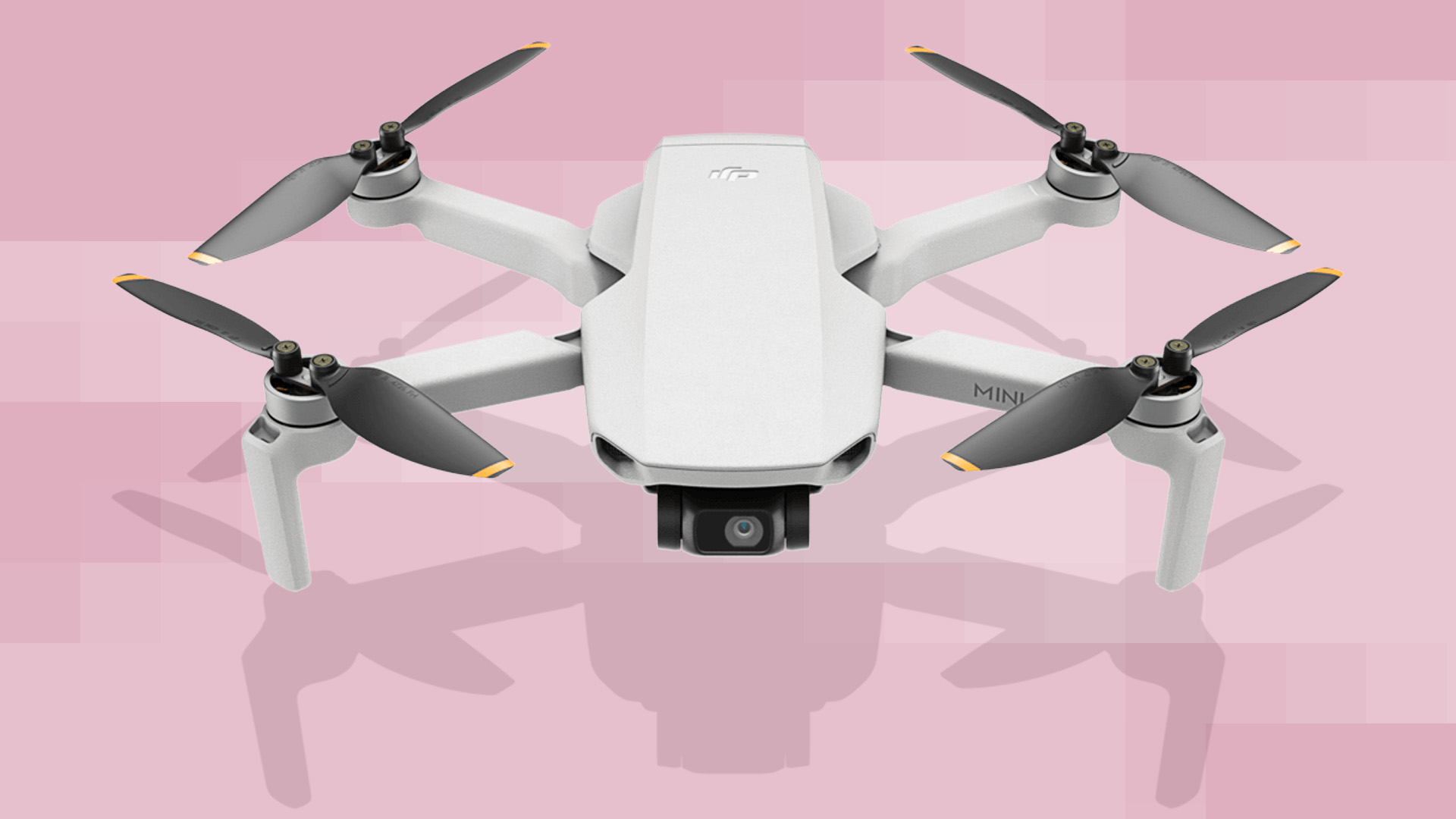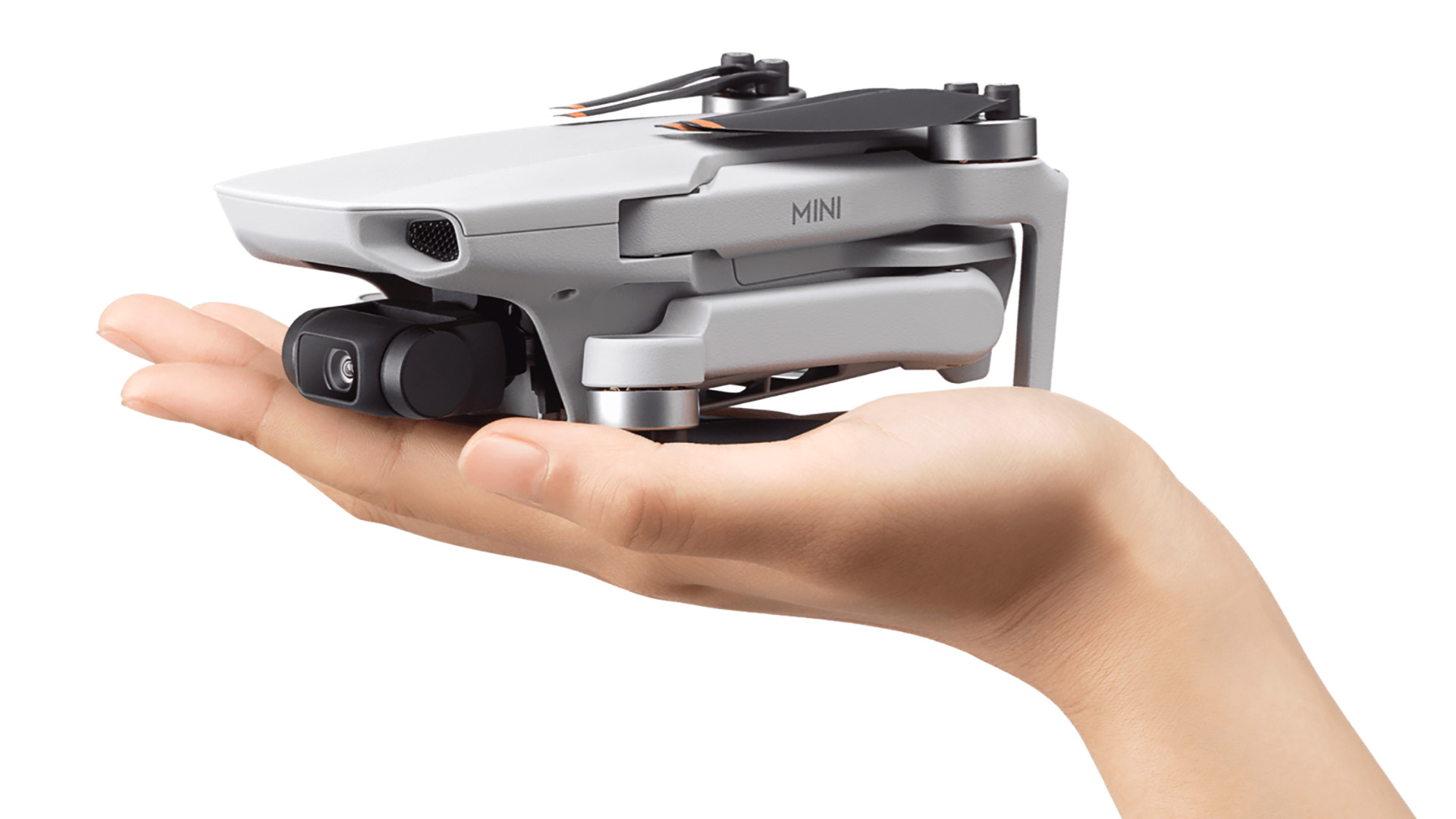3 things I expect to see in the DJI Mini 3 drone
From a video upgrade to improved obstacle sensors, here are our predictions for the upcoming DJI Mini 3


Update: this drone has now officially been released! Head to our DJI Mini 3 Pro review to find out what we thought.
The DJI Mini 3 could well end up being one of the best drones of 2022... it’s just a shame it doesn’t exist yet. We are likely to see the DJI Mini 3 released this year, though. We're expecting the Mini 3 to be a reasonably affordable but powerful upper-entry-level drone, but what else do we know?
Leaked information on the DJI Mini 3 is thin on the ground at present. However, we can make some sensible predictions based on the technology DJI has in its locker, and known advancements in processor and camera sensor technology. In this article, we've looked at all the rumours and the release patterns from past drones to put together our predictions for the DJI Mini 3.
So for now, you'll have to take most of the following as speculative. We’re here for the fun of it, but also to give you a view as to whether you should wait for the DJI Mini 3 or buy a DJI Mini 2, or ditch DJI altogether and opt for the new and outstanding Autel EVO Nano or Nano Plus, before it arrives.
DJI Mini 3: price and release date
One of the few decent DJI Mini 3 leaks comes from Twitter account DealsDrone. It shared a list of DJI products planned for 2022, including the Mini 3 drone, a DJI Pocket 3 action camera and DJI RS3 gimbal. DealsDrone also arranged these releases into month windows, giving the DJI Mini 3 an April 2022 release date. However, it did admit these release windows were just a guess.
What I can confirm is Inspire 3 , mini 3, FPV mini is coming in 2022, but date and other are guess pic.twitter.com/YHocjwgPySDecember 9, 2021
If it were to arrive in April, there would be a gap of just under 18 months between the DJI Mini 2 and DJI Mini 3. The DJI Mini SE is newer, announced in August 2021, and the DJI Mini 3’s main job is to establish a bit more ground between the budget SE and the step-up main Mini bloodline.
There are no solid rumours around the DJI Mini 3’s expected pricing, although we're confident it will land somewhere between the £269 / US$300 DJI Mini SE and the £879 / US$999 DJI Air 2S. The DJI Mini 2 currently costs £419 / US$449. Given the Mini 3 is likely to look similar to its predecessor, a huge price jump may be hard to sell, so we wouldn’t be surprised to see it cost £449-499 / US$499-549.
Get all the latest news, reviews, deals and buying guides on gorgeous tech, home and active products from the T3 experts
As ever, there will also be a 'Fly More' combo pack for a bit more that includes additional batteries and other accessories.
#1. 4K/60 video upgrade
The obvious next step for the DJI Mini series is 4K video capture at 60 frames per second. While the DJI Mini 2 can record at 4K resolution, its maximum frame rate is 30fps. We hardly need to tell you the benefits of 60fps. It offers the opportunity for easy 2x slo-mo, or smoother B-roll footage that matches the frame rate you use for your to-camera video.
Suitable camera sensors capable of 4K/60 have been around for ages. Sony makes a whole line of them, the IMX 277 / 377 / 477 / 577. The IMX277 was used in the GoPro range for years and in one sense is the best of the lot, as it can record 12-bit 4K video at 60fps. Let’s not dwell on that, though, as we have no clue as to which sensor the Mini 3 will use.
The obvious next question: would 4K/60 not step on the rotors of the step-up Mavic Air 2S? We don’t think so. The Air 2S has a 1-inch sensor, one much bigger than the DJI Mini 2’s. Larger sensors can dramatically improve image quality at trickier times of the day, like dusk and sunrise. While the Mini 3 could, as some hope, use a slightly larger sensor, it is not going to have a 1-inch one.
Why not? DJI can’t afford it, in two senses. A 1-inch sensor would make the DJI Mini 3 too expensive, and the larger lens required would push it out of its weight class.
The whole point of the DJI Mini series, other than its relatively non-intimidating cost, is that its drones fit under the 250g weight limit. Heavier drones are subject to more rules and restrictions, which vary depending on where you live. If you want a casual-use drone, you need a sub-250g drone.

#2. Smarter obstacle detection
Obstacle detection is the other very clear limitation of the DJI Mini 2. It has ground sensors, compromised of a pair of cameras on its bottom, but does not have the side, front or upwards obstacle sensors required for safer programmed flight.
The DJI Mini 3 could do with some of these obstacle avoidance sensors. They would allow for proper flight programming, not just the 'return to home' mode seen in the Mini 2. But where would these sensors go? The DJI Air 2S has obstacle cameras on its front, back and top, but not its sides.
DJI’s Mini 3 is unlikely to be able to fit in as comprehensive a sensor array. The Mini 2 is already only 8g below the magic 250g. Cost may be less of a show-stopping issue, as these obstacle detection cameras don’t need to use high-end tech. They separate close and far objects using parallax – which is why they appear in pairs on drones.
Our best guess is the DJI Mini 3 could have front obstacle sensors. This should allow safe programmed flight with forward motion when either maintaining altitude or gradually descending, as the DJI Mini 2 already has cameras pointing downwards. If DJI can fit even more in, we'll take 'em.
#3. Ocusync 3.0 wireless transmission
If the DJI Mini 3 arrives with 4K/60 video and some degree of obstacle detection, we’d be reasonably happy. Should we expect more? Ocusync 3.0 is another possible addition. This is DJI’s latest wireless transmission standard. The DJI Mini 2’s system provides range of up to 10km already, which is pretty good, right?
The DJI Air 2S’s Ocusync 3.0 bumps this up to 12km but, the part we really want, it also improves the image quality of the preview image from 720p to 1080p. Such a bump would enhance the experience of actually using the drone over the DJI Mini SE.
There are also rumblings of faster speeds and longer flight times per charge. However, it would be sensible not to expect too much to change in these areas. It all comes down to the DJI Mini 3’s serial party-pooper: weight. Short of devising a much more efficient rotor motor system, the drone would need a larger battery to last much longer than the DJI Mini 2’s 31 minutes max run time. And DJI probably can’t afford the additional weight.

Andrew is a freelance tech and entertainment journalist. He writes for T3, Wired, Forbes, The Guardian, The Standard, TrustedReviews and Shortlist, among others.
Laptop and computing content is his specialism at T3, but he also regularly covers fitness tech, audio and mobile devices.
He began writing about tech full time in 2008, back when the Nintendo Wii was riding high and smartphones were still new.